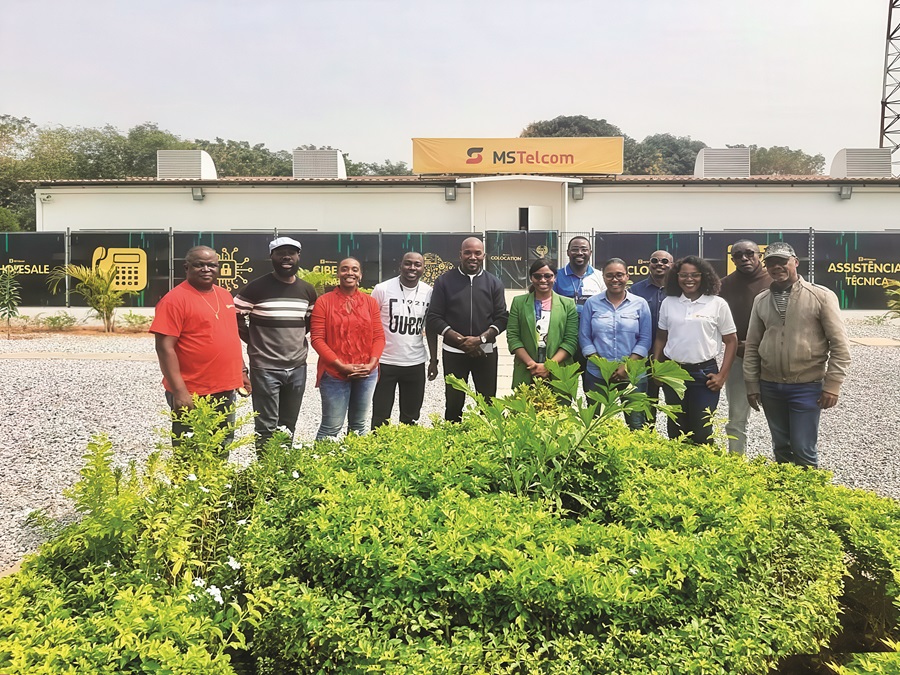 Located on the west central coast of Africa, Angola is a resource-rich country with natural harbours and a narrow coastline that transforms into a huge plateau. Though it is a country rich in minerals such as diamonds and gold, it faces some significant challenges. Angola is focusing on the diversification of its economy, moving away from oil and striving to encourage new industries, many of which rely on digital infrastructure.
Located on the west central coast of Africa, Angola is a resource-rich country with natural harbours and a narrow coastline that transforms into a huge plateau. Though it is a country rich in minerals such as diamonds and gold, it faces some significant challenges. Angola is focusing on the diversification of its economy, moving away from oil and striving to encourage new industries, many of which rely on digital infrastructure.
The Digital 2023 Global Overview report flagged that there were 11.78m internet users in Angola at the beginning of 2023 out of a population of 36.13m. Between 2022 and 2023, there was a rise in internet users of 3.1%. Internet penetration at this point stood at just 32.6%. Internet access is critical to the development of a digital society in Angola for both businesses and individuals. This is coupled with a young population that craves digital services. Internet connectivity remains limited across the country but the promotion of economic development hinges on the country’s ability to digitalise. With businesses highly reliant on good connectivity to enable them to improve performance and to connect with the global marketplace, a reliable network is essential.
The Angolan government has recognised the power of satellite connectivity in their quest to close the digital gap that is so prevalent across the country. In 2017, the Angolan government developed the Angosat-1 satellite, which was launched in 2017 to address the cost of capacity to connect cities and provinces across its large landmass where terrestrial networks are simply cost prohibitive. Unfortunately, Angosat-1 suffered an in-orbit failure. However, with the launch of Angosat-2 in 2023, Angola has developed its own expertise in the satellite sector and this sovereign satellite has enabled the country to establish initiatives that help to tackle their biggest challenges.
Last year, at World Space Week, the Angolan Ministry of Telecommunications, Information Technologies, and Social Communication (MINTTICS) minister, Mário Oliveira, delivered a speech that confirmed that satellite is now widely used to deliver services to national operators, connecting over 150 remote locations and has helped reduce digital disparity across Angola.
ST Engineering’s Role
ST Engineering iDirect has been working in the African region to help to connect the continent for decades. The company has a longstanding partnership with Mercury Telecommunications Services (MST), an Angolan government-owned service provider and integrator.
MST was awarded the contract to deploy the first Ku-band services on Angosat-2, allowing the first five beams covering Angola to be activated for service. However, there were some barriers to deployment that had to be overcome.
The multi-band nature of the satellite, which features a Ku-band uplink and Ka-band down-link configuration, meant that smaller operators found it difficult to use the capacity, yet it was important that all businesses both large and small were able to access it. There were also no existing Ka-band gateways in Angola, so a suitable site had to be located. Additionally, the Angolan satellite market is highly regulated and it can be challenging to secure foreign currency.
fruition, MST leveraged its existing iDirect Evolution platform, expanding with additional line cards, licenses and modems.

ST Engineering iDirect and MST had already established a close partnership that had been built over years of business together. ST Engineering iDirect has consistently offered a high level of support and consultative services to MST. This was in addition to the reputation that ST Engineering iDirect has established in Angola as a proven and highly regarded technology. Furthermore, to ensure a fast turnaround time to meet expectations and ease up logistics, Tinsky Connect, a local partner, was able to deliver the final product.
A Ka-band gateway is now being used by MST at the site of National Space Program Management Office (GGPEN), which was created to manage and monitor the development of the Angolan National Space Programme.
Lighting up Southern Africa
Today, Angosat-2 offers Angolan institutions and companies access to cost effective satellite bandwidth and enables end users to access reliable connectivity services.
MST has become the go-to service provider for all Angosat-2 Ku-band service offerings, including Virtual Network Operators (VNOs) and single users. The VNO capability is highly significant as it enables MST to provide services to companies that are effectively their competitors, in a cost-effective way.
The Angosat capacity is mainly utilised for enterprise and hub services, and it is helping the population to connect whilst having a positive effect on the economy.
Previously, when commercial capacity has been used, it has always been paid for in US dollars. However, since the introduction of capacity on the Angosat-2 satellite, it is stipulated that all capacity is paid for in Kwanza, the currency of Angola. This is resulting in a strengthening of the economy as businesses can pay for their satellite services in the local currency.
The growing satellite connectivity is also enabling the Angola to diversify its economy, moving away from oil and instead focusing on other sectors such as agriculture, maritime and earth observation. The Angosat-2 programme has been a positive step for the Angolan satellite communications industry, establishing the country as a space player and bringing significant benefits to the population.












Add Comment